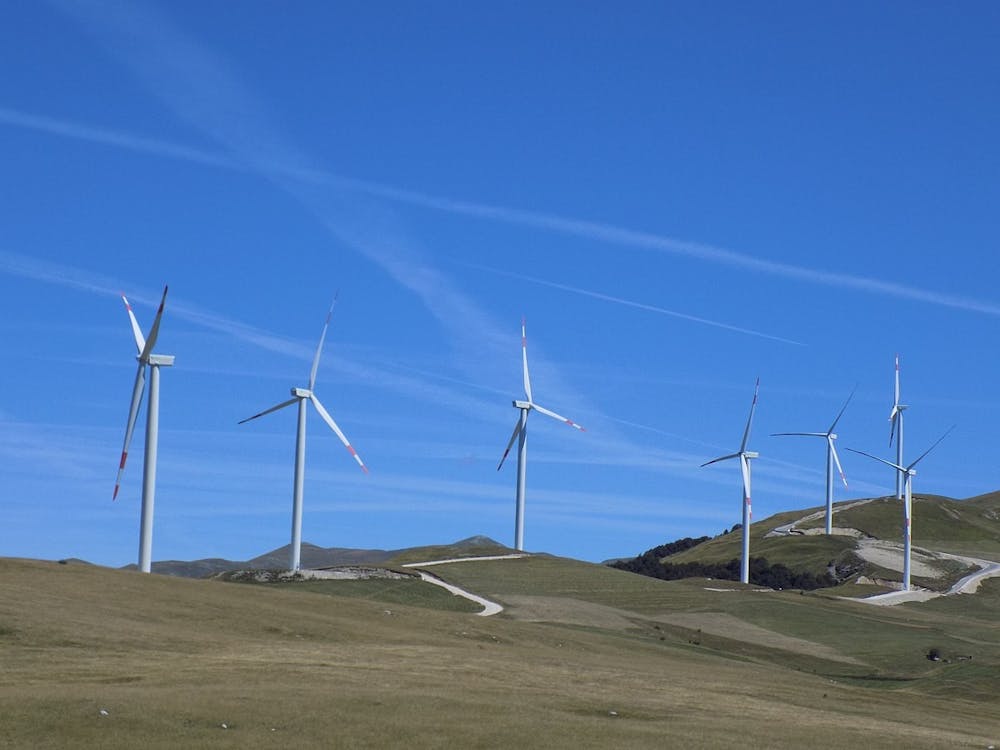Over the past several weeks, Gov. Ralph Northam, D-Va., has signed into law dozens of bills from this year’s historic legislative session — the first time in nearly 25 years that Democrats have controlled both chambers of the General Assembly. From enacting sweeping new gun control measures to ensuring the protection of LGBTQ+ individuals across the Commonwealth, the significance of this year’s legislation cannot be understated. However, perhaps the most ambitious of all these pieces of legislation has been the enactment of the Virginia Clean Economy Act.
Introduced by Del. Richard “Rip” Sullivan Jr., D-Fairfax, the VCEA establishes a series of benchmarks that must be met by utility providers in Virginia over the next three decades to ensure the transition of the Commonwealth’s electrical grid to becoming entirely carbon-free by 2050. Companies that fail to meet these standards will be subject to penalties with the revenue generated from this being used to fund job training and renewable energy programs in historically underserved communities. Altogether, in enacting the VCEA, the Commonwealth becomes the first southern state to provide a clear framework for how it would build a clean electrical grid — an accomplishment that can neither be overstated nor overlooked.
Furthermore, aside from establishing a series of benchmarks that utility providers such as Dominion Energy and American Electrical Power will be required to meet, the VCEA also calls for the construction of new renewable energy sites across Virginia. This includes 5,200 megawatts of offshore wind generation and a further 16,100 megawatts of onshore wind and solar production. Given that as of 2017, only thirty-eight percent of Virginia’s electricity net generation came from carbon-free sources, the VCEA will undoubtedly kickstart a construction boom of renewable energy that will not only modernize Virginia’s electrical grid but also create tens of thousands of new, high-paying jobs.
For Virginia’s Eastern Shore, in particular, which has traditionally had one of the highest rates of unemployment and poverty in the Commonwealth, the economic potential of the VCEA is huge. Not only will the Eastern Shore directly benefit from its proximity to these new offshore wind farms but the act itself also prioritizes hiring workers from underserved communities and creates an apprenticeship program. Moreover, the VCEA also establishes a low-interest loan program to help coastal communities that are subject to recurrent flooding through revenue generated from the sale of emissions. With Virginia being home to many of the wealthiest counties in the country — such as Fairfax, Loudon and Arlington — as well as some the poorest — including Northampton, Accomack and Buchanan — the VCEA is an economic win-win for every Virginian.
The act also promises to improve the safety, health and welfare of all Virginians. In reducing the total amount of carbon being emitted into the atmosphere, the VCEA serves to not only reduce Virginia’s production of greenhouse gasses but will also undoubtedly improve the air quality of those living near and downwind from such facilities. By 2024, nearly all of Virginia’s coal-fired plants will be required to close under the terms of the VCEA. According to the NIH, coal-fired plants are responsible for emitting nearly half of the hazardous air pollutants identified by the EPA, many of which have been shown to cause skin and eye irritation, behavioral and cognitive issues, heart and lung diseases and even cancer. With a 2009 study finding that residents in Hopewell — a community home to several plants and immediately downwind from the Chesterfield Power Station — were nearly three times as likely to develop cancer in their lifetime as the result of air pollution, measures such as the VCEA are quite literally saving lives.
Finally, unlike similar proposals adopted by other states, the VCEA provides not only a realistic framework for Virginia to become carbon-free but also flexibility in order to achieve this goal. Specifically, under the terms of the VCEA, Virginia will enter into the Regional Greenhouse Gas Initiative — a cap and trade program with ten other states that aims to reduce overall carbon dioxide emissions from the power sector while also providing companies with a degree of flexibility as they make this transition. Additionally, in recognizing the necessity of nuclear energy — which accounts for over seventy-five percent of Virginia’s carbon-free energy production — the VCEA excludes this energy source from its calculations, thus making it easier for utility providers like Dominion — which operates the North Anna Nuclear Generating Station — to meet this goal.
Ultimately, in a legislative session marked by historic accomplishments, the VCEA, in particular, stands apart due to the potential that it holds in shaping Virginia’s future. Aside from utility companies, public entities, including the University, have also recently announced plans to eliminate their respective carbon emissions. Although stories such as these have been drowned out over the past several weeks and months due to the confusion and chaos brought about by the ongoing pandemic, they nonetheless provide a glimmer of hope at a time when the future seems to grow bleaker by the day.
The Cavalier Daily Editorial Board is composed of the Executive Editor, the Editor-in-Chief, the two Opinion Editors and their Senior Associate. The board can be reached at eb@avalierdaily.com.







